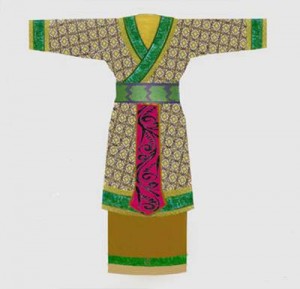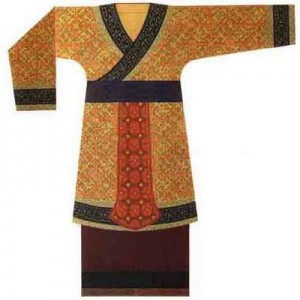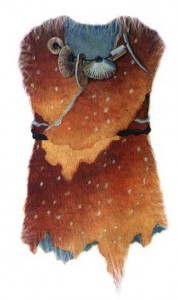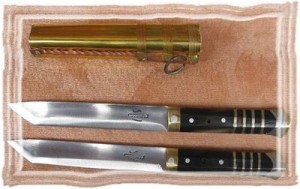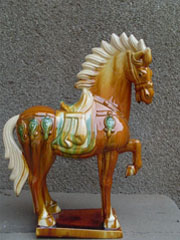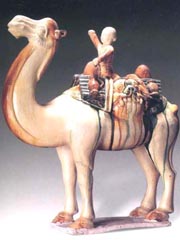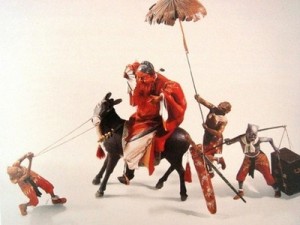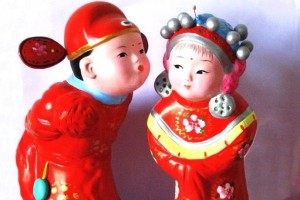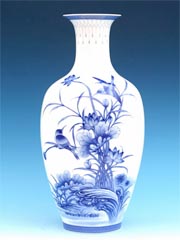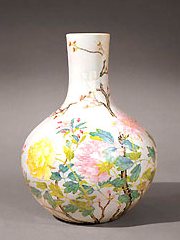In 221 BC, Qin unified, becoming the first time in Chinese history, a vast and many nationalities unified feudal system countries. Qin Shi Huang in order to consolidate its dominant position to implement, such as a unified text, uniform weights and measures, unified criminal law doctrine, a series of measures to strengthen the centralization of the system of uniform costumes. However, Qin Shi Huang came to power not long, the Qin Dynasty costumes systems only achieve the goal of start-up, there were only a unified color of clothing, and the rest is not complete.
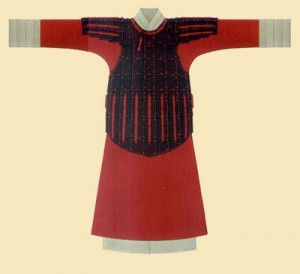
Qin Dynasty clothing still clinging to the habit of the Warring States Period, style of clothing is relatively simple. Qin Renchong still black, black dignified and solemn. Qin black preference is as profound, Qin Shi Huang of yin and yang theory, I believe Qin grams of weeks, should be water, fire, because the Zhou Dynasty “the anger wins gold, color is still red, he thinks Qin to replace Zhou Dynasty should be water Germany, on behalf of the color is black, so the emperor provisions the clothing color black top, and thus became the Qin Dynasty costumes distinguished black color and the color of the mainstream.
Qin Dynasty costumes
Ancient Chinese Clothing – Qin Dynasty costumes
Qin Dynasty robes only a ritual dress, black dress shirt lower, then many men in robes for your style big sleeves shut, with lace, officials robes of green , while the common people to wear a white robe. Of Dr. Qin Daide and scholars of clothing is very simple, Frame of winter wear gowns, summer wear tan clothes, basically not really gorgeous. Qin lower peasant clothing, burlap production tan clothes, Frame of gowns, sweater jacket.
Qin Terracotta Warriors and Horses is the eighth wonder of the world, the Qin army clothing must mention. In the military, Qin follow the example of King Wuling of Zhao Hu Fu instead on the jacket and pants in the form of easy riding and shooting. High-ranking officers in the Qin army, wearing a double-length jacket, trousers, Waipi color armor; There are two middle-ranking officers of clothing, a long jacket, the other is high collar pleated suit. The soldier’s clothing under the branches of the military are not the same and different: ordinary warriors dressed in armor, in order to facilitate the free activities of the soldiers, armor chest poorly reduction piece Nail, nail the abdomen and chest armor slices arranged opposite, that is in the form of the showings pressure poorly, from the midline of the middle of the chest and abdomen, all nail by the intermediate layers, to both sides of the same nail combination with abdominal shoulder. Around the nail in the shoulder, abdomen and neck are connected with a connection, all nail on a nail, or two or three or four, up to no more than six. A length of the clothing, the same before and after the hem round. Lightly armed soldiers wearing a long jacket, and gird leather belt, shorts, legging bar; war drivers and some wear long undergarment, Waipi shoulders arm armor armor, and some also wear special armor clothing, A coat color is extremely rich in the Qin Dynasty red, rosy red, pink, malachite green, sapphire blue, not black only.

